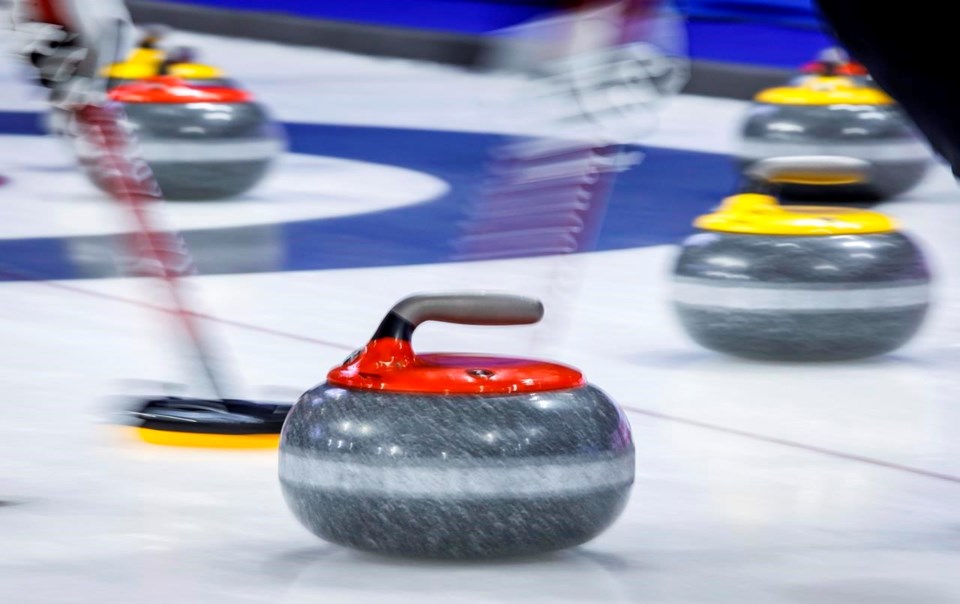Curling Canada's new chief executive officer will have a long to-do list when they take on the job next year.
Danny Lamoureux is serving as interim CEO after Katherine Henderson left to become president and CEO of Hockey Canada. A new hire - expected sometime in early 2024 - will come as curling appears to be approaching a crossroads in this country.
Attendance is sagging at major events, there are fewer top-tier competitions on the calendar and Canadian results at international events continue to slip.
Curling does not seem at the forefront for a younger generation that's used to entertainment-heavy productions and a sports world where social media, engaging athlete personalities and YouTube clips are king. While still a decent ratings draw, curling's in-venue experience is sorely lacking.
The grip that domestic teams had on the sport is growing weaker by the season with multiple factors to blame. Some changes have been made - notably the hiring of David Murdoch as high-performance director - and more will likely come once a new CEO settles in.
But international teams continue to own the top step of the podium at the world championships and the Olympics. They also top the men's and women's world rankings lists.
Nolan Thiessen, a three-time national champ and Curling Canada's executive director of marketing and fan experience, said he thinks the elite curling scene in Canada is in a "bit of a transition."
"I think everyone took a step back this year and just said, 'OK what is everybody doing outside of our borders? How are teams training and getting better?" he said. "There's that realization and that understanding that you may win medals in front of a whole bunch of people in an arena in February and March and April. But you actually win those medals in June, July, August, September, October in front of nobody. That's the big change.
"It's a lot of hard work. We've got a lot of teams putting in a lot of hard work and hopefully we'll start to see all those results later on. But I think the biggest thing is just really getting down to the brass tacks of what it means to make shots and what it means to win curling games."
Brad Gushue's team from St. John's, N.L., won bronze at last year's Beijing Olympics for Canada's lone curling podium appearance at the Games.
He settled for silver at this year's world championship while Kerri Einarson's team took bronze at the women's worlds. Canada missed the podium at the world mixed doubles playdowns and the wheelchair curling team settled for world silver.
Rachel Homan skipped her Ottawa-based side to a WFG Masters title this month while Joel Retornaz of Italy won his third straight Grand Slam crown in men's play. There were only six Canadian entries in each 16-team pool at the competition.
"We need to figure out a way to get more teams at the top," Homan said in a recent interview. "Obviously it's more difficult to put the same amount of funding and resources to so many teams in such a big country.
"So it's not an easy task to make sure more of our teams are at the top. The world is tough to beat right now."
Homan is behind top-ranked Switzerland's Silvana Tirinzoni in the world rankings. Winnipeg rinks skipped by Einarson (No. 4) and Jennifer Jones (No. 5) are the only other Canadian teams in the top 10.
Calgary's Brendan Bottcher is No. 2 behind Retornaz on the men's list. Gushue is sixth, Winnipeg's Matt Dunstone is eighth and Calgary's Kevin Koe is ninth.
Funding arrangements are often different for top international teams and centralization is often a priority. A handful of Canadian teams are full-time curlers but many rinks still try to balance regular jobs with their sporting pursuits.
Many teammates also live in different provinces, so four-player practice time happens before events or during training camps.
"I think we are still going to win in Canada and it's probably going to mean even more now because it is so hard and it is such a hill to climb," Thiessen said. "It's just exciting and it's a challenge. That's how we have to look at it."
Off the ice, Tim Hortons did not renew its sponsorship of the Brier and the Canadian Curling Trials. Montana's came on board as the Brier sponsor but the search is still on for a Trials sponsor.
On the Season of Champions calendar, Curling Canada has yet to announce plans for potential replacements after dropping the Canada Cup and Continental Cup. The PointsBet Invitational kicked off the 2023-24 campaign but attendance was dismal.
Grand Slam events - now just five per season instead of the usual six - have seen middling spectator numbers despite holding competitions in small venues.
Broadcast coverage of the Slams remains uneven with limited draws available to viewers. The first two days of competition, all morning round-robin draws and tiebreaker games are not televised.
Attendance should pick up later this season with the national championships returning to provinces with strong curling roots. The women's playdowns will be held in Calgary in February while Regina will host the men's championship in March.
This report by The Canadian Press was first published Dec. 23, 2023.
Follow @GregoryStrongCP on X.
Gregory Strong, The Canadian Press


